Piriformis syndrome and sciatica are both conditions that can cause pain, numbness, and/or tingling in the lower back, buttocks, and legs. However, despite the similarity in symptoms, these two conditions are actually quite different. It is essential to understand the difference between the two to get an accurate diagnosis and receive appropriate treatment.
In this article, we will explore the key differences between piriformis syndrome and sciatica, as well as their causes, symptoms, and treatment options. So, if you’re unsure whether you’re experiencing piriformis syndrome or sciatica, keep reading to find out.
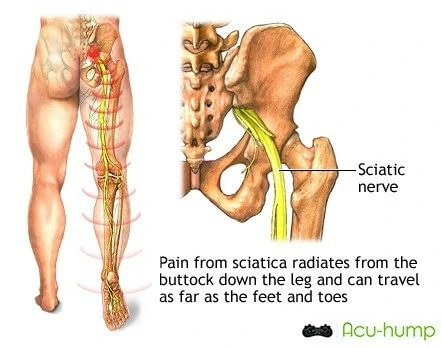
What is sciatica
Sciatica and piriformis syndrome are often confused because they share similar symptoms, but they are different conditions. Sciatica is a type of secondary pain that results from various underlying conditions.
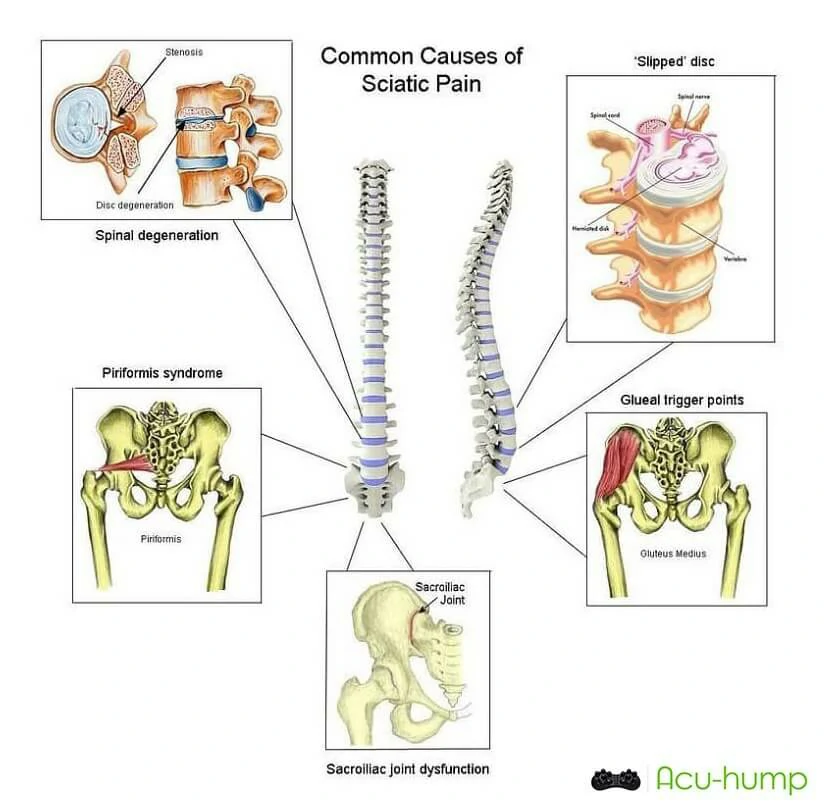
There are 8 conditions that can cause sciatica, including:
- Piriformis syndrome: when the piriformis muscle in the buttocks puts pressure on the sciatic nerve.
- Herniated disc: when a disc in the spine compresses or irritates the sciatic nerve.
- Spinal stenosis: a narrowing of the spinal canal that leads to pressure on the sciatic nerve.
- Degenerative disc disease: gradual wear and tear of the discs between the spinal vertebrae that can lead to nerve compression.
- Spondylolisthesis: when one vertebra in the spine slips forward onto the vertebra below it, leading to nerve compression.
- Trauma or injury: such as a fall or car accident that results in nerve compression.
- Tumors: abnormal growths that can compress the sciatic nerve.
- Infection: such as spinal infections or shingles, can cause inflammation or damage to the nerve.
These are the common types of sciatica, with types 2-6 being referred to as sciatica while types 1, 7 and 8 are specifically defined separately.
Can tight piriformis cause sciatica?
As we can see, piriformis syndrome is one of the conditions that can cause sciatica. Piriformis syndrome is a condition caused by tightness, spasming, or an inflamed piriformis muscle that irritates the sciatic nerve, leading to pain, numbness, or tingling in the buttocks and leg.
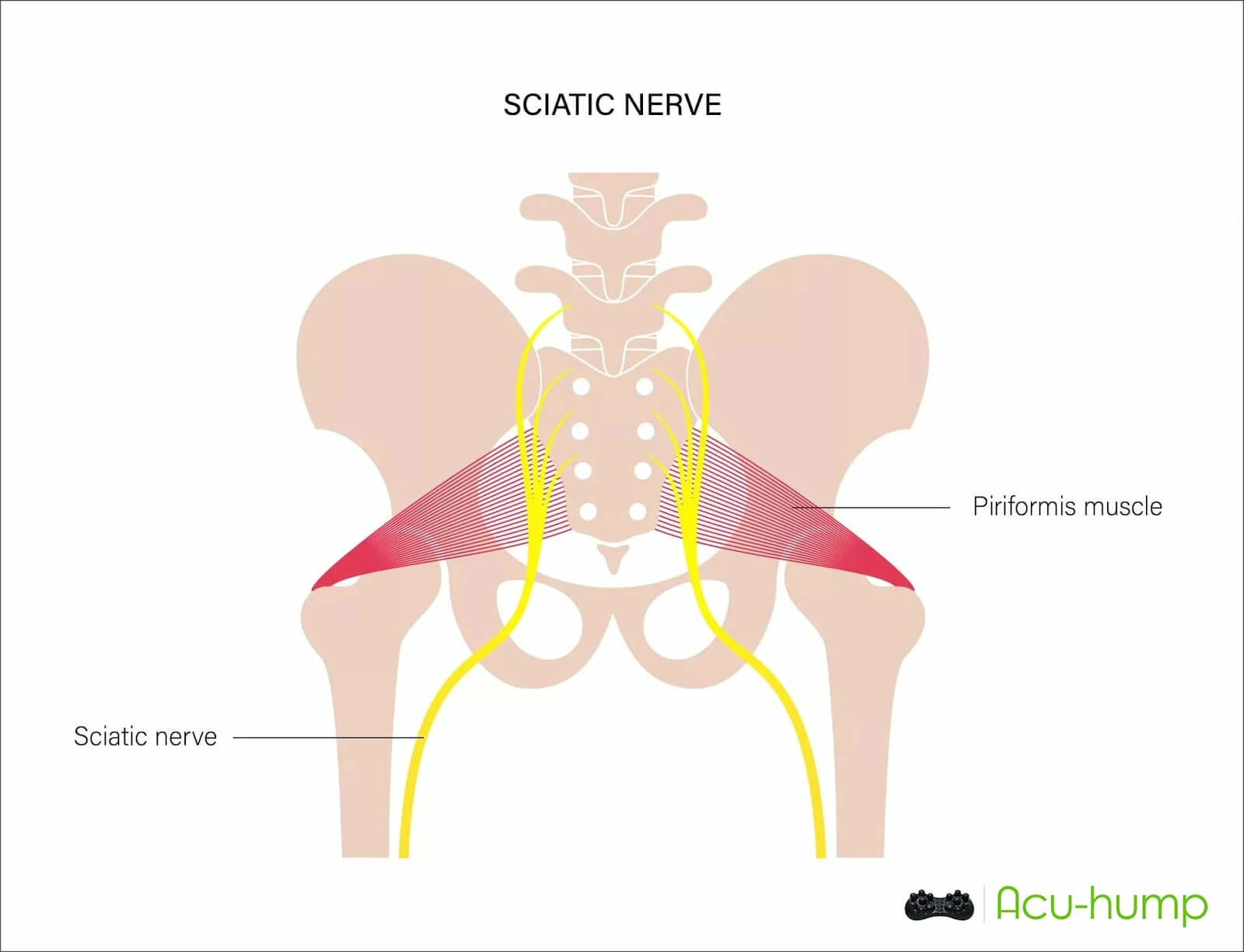
What is the difference?
One way to differentiate between these two conditions is by noting where the pain is felt. Piriformis syndrome usually results in pain on one side of the buttocks, while other conditions of sciatica typically produces pain that affects both buttocks and both legs. Furthermore, other conditions of sciatica often results from problems with the spinal vertebrae, such as herniated discs and spinal stenosis, while piriformis syndrome is linked to muscle strain or spasm and may occur due to prolonged sitting, overuse, or injury.
It is crucial to obtain an accurate diagnosis to determine the best course of treatment. In some cases, piriformis syndrome may require physical therapy, stretching, and massage to release the muscle tension. At the same time, sciatica may need more extensive treatment such as chiropractic care, medication, or surgery. It is always recommended to consult with a healthcare provider for a proper diagnosis and treatment plan.
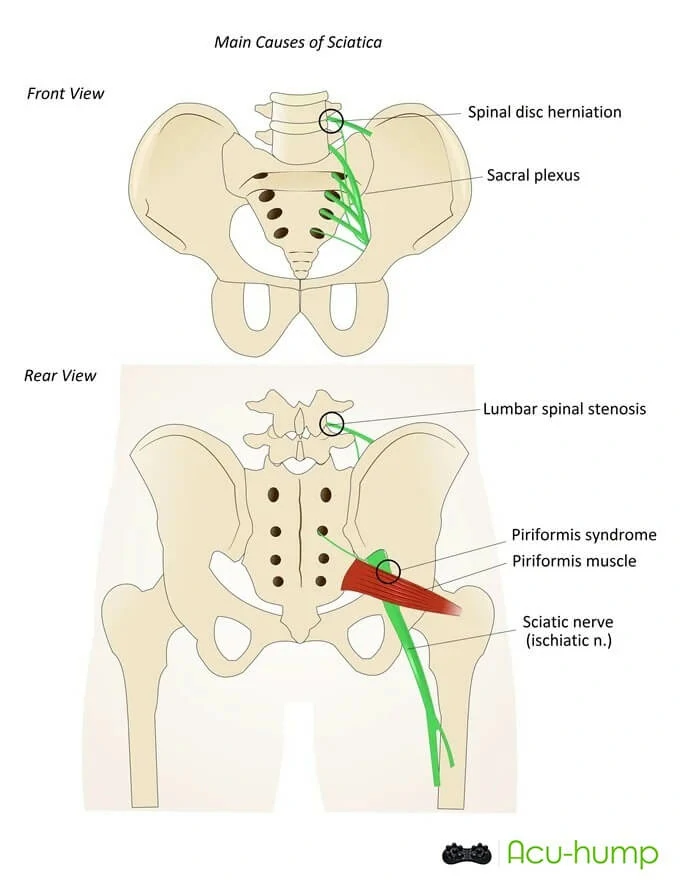
Test for piriformis syndrome vs sciatica
Sciatica is a common condition that can impact your daily life, and it’s essential to diagnose and treat it correctly. If you’re experiencing symptoms like shooting pain, numbness, tingling, or weakness in your legs, consult with a healthcare provider. They may use various diagnostic tests to determine if you have sciatica and what’s causing it.
Here are 3 common diagnostic tests for sciatica:
1. Medical test
Include spinal X-rays that can reveal bone abnormalities and spinal injuries, MRI scans that provide detailed images of soft tissue like nerves and disks, EMG and NCV tests that measure nerve damage, and CT scans that enable the diagnosis of spinal cord injuries and neurological problems that can cause sciatica.
2. Straight leg test
This test involves lying flat on your back and lifting one leg straight up while keeping the other leg bent. If you experience pain or discomfort in your leg while doing this, it could indicate a herniated disc, which is a common cause of sciatica.
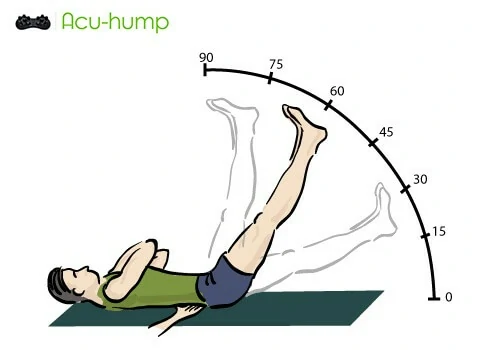
3. Piriformis muscle test
Piriformis syndrome is one of the lesser-known causes of sciatica. Diagnosing the source of your leg pain is an essential step towards effective treatment of piriformis syndrome. Your healthcare provider may perform tests to check the piriformis muscle’s strength and flexibility to rule out this condition.
- FAIR test:
This test helps to diagnose piriformis syndrome. To perform this test, lie on your unaffected side with your affected leg on top. Bend your knee to 90 degrees, and the healthcare provider gently rotates your knee inward and downward towards your opposite leg. If you feel pain in your buttock’s region, this may indicate piriformis syndrome.
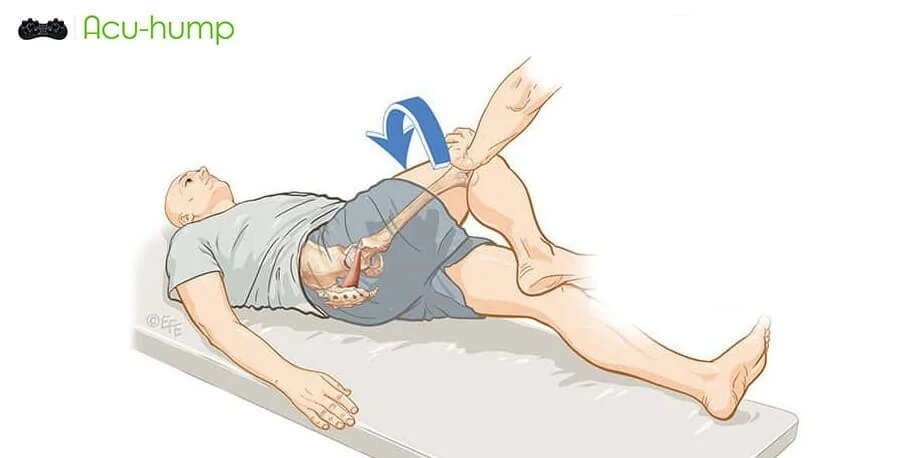
It’s essential to have a healthcare provider accurately determine the cause of your leg pain to devise a suitable treatment plan. Depending on the type and severity of your condition, your healthcare provider may recommend therapies like massage therapy, stretching, or physical therapy.
5 Common Treatments
If you’re experiencing piriformis syndrome or sciatica, don’t worry. There are plenty of treatment options out there that can help you feel better. The best part? Early intervention can make all the difference.
piriformis syndrome massage
Massage therapy can be an effective way to reduce muscle tension and promote relaxation in the body. Massage can help to reduce inflammation and soften tight muscles which can help to relieve pressure from the sciatic nerve. Massage can be beneficial for those experiencing acute or chronic pain, as it can promote relaxation and help to release tension in the body. This therapy can be used alone or in conjunction with other treatments.

Piriformis stretches to get rid of sciatica
Proper stretching can help to increase flexibility and improve the range of motion in the hip and gluteal muscles, which can help to reduce compression on the sciatic nerve. Stretching exercises are often recommended as part of a comprehensive treatment plan to prevent future flare-ups.
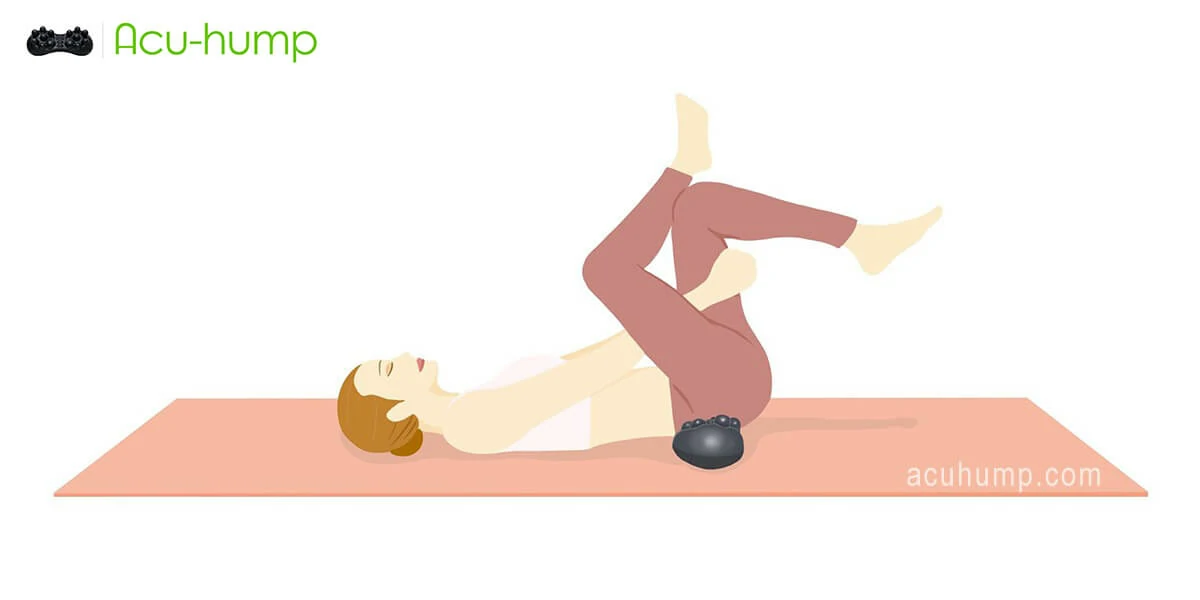
Acu-hump release tool
It is often used as part of syndrome treatment, in combination with massage and stretching therapy.
Acu-hump® Release the Back & Butt

Acu-hump is a sciatic stretcher that was designed with inspiration from acupressure massage. This tool contains 14 massage bumps that can deeply press into tense muscles, help to release tension and blockages that may be responsible for pain and discomfort. Using Acu-hump for stretching can enhance the effectiveness of relaxation.
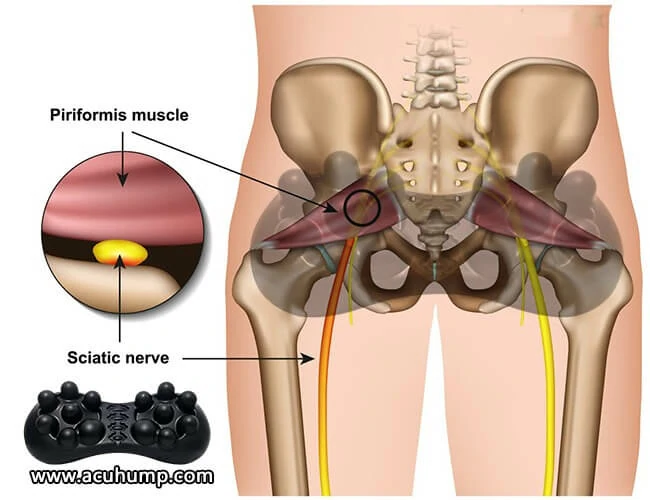
Acu-hump: 30-day return policy. No risk for you.
In addition, Acu-hump can also be used to relax the lower back, SI joint, hamstrings, to release the muscles along the sciatic nerve.

Physical therapy
Physical therapy is an effective way to treat both piriformis syndrome and sciatica. Physical therapy can help to strengthen the muscles that support the lower back and promote improved posture. A physical therapist may also recommend specific exercises to improve balance and coordination.
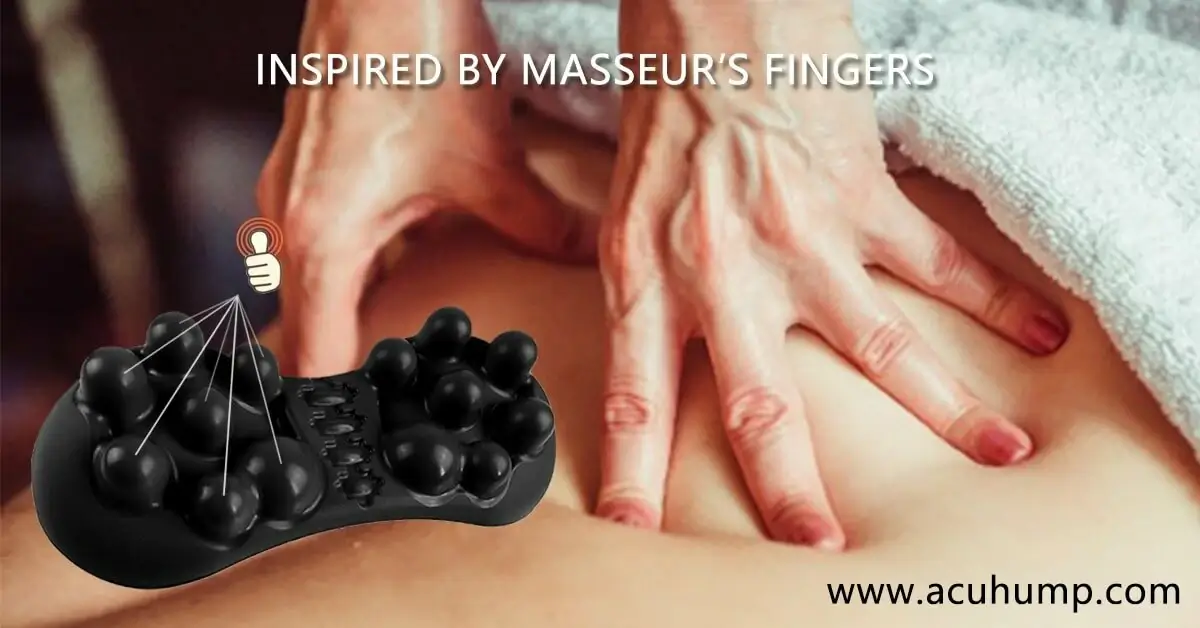
Medication
Medication is often used to treat both conditions, especially if the pain is severe. Pain-relieving medications, such as nonsteroidal anti-inflammatory drugs (NSAIDs), can be effective in reducing inflammation and pain. Muscle relaxants, such as Baclofen, can also help to reduce muscle spasms and improve flexibility.
By getting help sooner rather than later, you increase your chances of recovery and prevent things from getting worse. So don’t hesitate to start taking steps towards feeling better!
To sum up, it’s crucial to correctly identify the differences between piriformis syndrome and sciatica in order to find the most suitable treatment methods. In addition to traditional options such as stretching exercises and physical therapy, incorporating Acu-hump into the treatment plan can provide an effective and natural way to alleviate discomfort and promote healing. By integrating these approaches, individuals can experience improved health and well-being.
Acu-hump: 30-day return policy. No risk for you.
